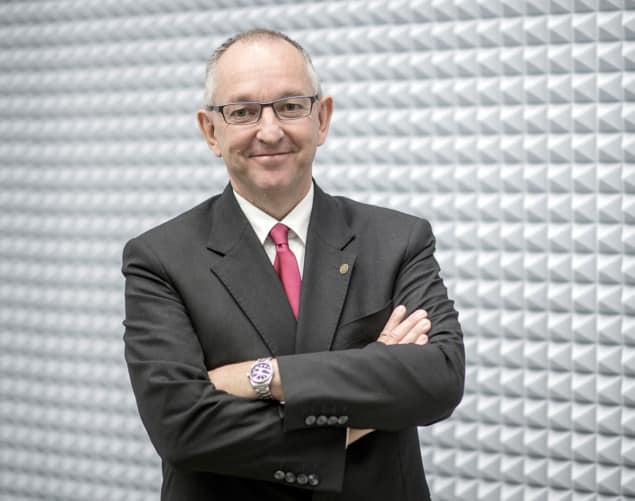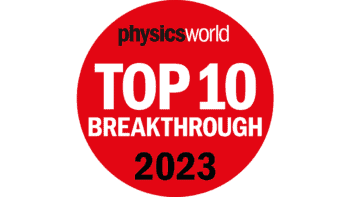Lars Montelius, president of the International Union for Vacuum Science, Technique and Applications (IUVSTA), shares his views on the creative nature of vacuum science and how vacuum-enabled innovations can help build a more sustainable society

What is your background?
I’m a scientist in nanotechnology and a professor at Lund University in Sweden. I’ve been working with nanotechnology since 1988, and for the past four years I’ve been the director-general at the International Nanotechnology Laboratory, which is situated in Portugal and is an intergovernmental research laboratory like CERN. I usually say that we are working on innovations that make the world a better place.
What role does vacuum technology play in those innovations?
Vacuum systems are used in all kinds of equipment, and not only in the sciences; there is also a very long history of using vacuum for industrial machines and processes. Within the sciences, vacuum is important if you want to understand materials at a very small scale, because to do that you need very clean and stable conditions. In industry, one of the major applications is in industrial machines. For instance, vacuum is used to lift, position and move objects. Simply speaking, without vacuum many industries would not exist. An example is the semiconductor industry. Once upon a time, the electronics industry ran on vacuum tubes: vacuum was an essential requirement for switching electrical currents. Although these switches have since been replaced by solid-state electronics, manufacturing the electronics and circuits still requires vacuum conditions.
I think vacuum is one of the most important elements in modern society, but it’s a paradox because the vacuum itself is maybe not so important – it’s what you do with it that’s important. Vacuum is an enabler, and I hope that an organization like IUVSTA can help people – particularly the younger generation – to “get” the enabling character of vacuum science. It is important to understand that with science and technology, you can do things that will make the Earth a better place, with better conditions for everyone – such as by reducing the level of disease, or reducing the number of unnecessary deaths (from cancer, for example), or by using our resources more effectively to create a sustainable society. Everything in science is about answering the question “why?” and for me the answer to why you do science is not just because it’s interesting and inspires curiosity. It’s mainly because it’s meaningful and needed and will ultimately help to make the world a better place, although of course it is also extremely interesting, fun and creative (as well as challenging, which means you need to be passionate about what you do).
What does your role at IUVSTA involve?
IUVSTA is a member organization, and our members are the national vacuum societies of different countries. We run programmes and conferences to help these societies do things together, and we produce information (such as our new ebook) to facilitate the exchange of knowledge between different countries. We also have divisions for certain areas of the field and these divisions hand out awards to honour notable achievements. My role as president is to help organize and structure this work so that we can accomplish our goals.
What are the major challenges that IUVSTA is facing in these activities?
I think IUVSTA faces the same challenge that science and technology are facing worldwide, which is to get more people into the field. In many countries, there is a tendency for smaller and smaller percentages of students to have a scientific training; they would rather choose something that is “easier”. In the developing world there is still a strong interest in becoming an engineer or a scientist, but in the more industrialized regions that is not the case. One of the ways we are trying to combat this is by articulating the closeness between scientists, engineers and artists/designers in terms of creativity. If you ask people on the street to name a creative profession, they will probably identify artists as being very creative, but typically not scientists, and that limits our ability to attract talented people into science and technology.
An important part of our mission at IUVSTA is to help our national member societies express that science is about doing things that are meaningful, creative and inspiring, with a close connection to the rest of society. In the past, I think scientists were put in ivory towers: you did your science, and people understood that it was being done and that it was important to do, but they did not really think it affected them. Now, however, we are seeing a big diffusion of technology into everyday life, with mobile phones and “Internet of Things” devices, and there is a gap emerging between being a heavy user of technology and being interested in contributing to develop that technology further. So IUVSTA is trying to give recognition to people who make big contributions to science and technology and who also have the ability to articulate how these contributions connect to society. It’s not a case of “science for society” or “society for science” – it’s really science with society.
Could you give us an example of how the vacuum science community can be creative and support positive changes in society?
Again, I would say that vacuum science is an enabler. Without it we would not be able to make a lot of the discoveries that later go on to become practical applications, and every year there are new developments within vacuum science that enhance production capacities in industry, and therefore help more people to enjoy the possibilities that come from technology. One example is the scanning-tunnelling microscope, which makes it possible to image individual atoms on a surface. This would not be feasible outside a vacuum environment, but thanks to vacuum we can start to play with these individual atoms, build artificial structures and start to tailor-make materials with functional properties. The understanding we are getting can then be transferred to the “metre” scale and used in technologies for various applications.
The role that vacuum plays is taken for granted. In a way, that is nice. People don’t think much about it, and they should not think about it because there is no need. However, there is a need to understand that working with this technology is a requirement for the growth of a good society. Take self-driving cars. These cars navigate using sensors, and everything relies on electronic systems (computers, servers, etc) to co-ordinate information so that the car keeps its distance from other objects on the road and does not drive somewhere it shouldn’t. But these technologies are not isolated. There is a risk that a cyberattack would harm the connections between the component systems, so we need to have some ethical discussions and work with society to ensure we get the absolute best out of the technologies we are creating.
What are some of the most exciting technologies emerging within the vacuum industry itself?
One example is the creation of plasmas. These systems of energetic ions are used in various industries to clean surfaces or deposit materials, but we’re now also seeing them used for applications such as wound healing and even creating clean water for drinking. Another example is thin films. These can be used for electronic purposes, such as making sensors that can be used in liquids (including inside our bodies), but they are also gaining applications in the food industry. In some types of food packaging – specifically, for foods with strong aromas such as coffee and chocolate – you need an “aroma protector” to maintain the quality over time. Otherwise, the coffee or chocolate will not taste good if you leave it for a while before consuming it. You may have seen that many food packages have a metallic inner surface, and this is essentially what that does: it protects the aroma. Now, however, we are developing technologies to replace the metal films with something that is more sustainable, such as polymers that have been treated with plasmas to create a labyrinthine porous structure like a bowl of spaghetti. Because of these pores, the pathway for aroma molecules to escape is so long that the aroma stays inside the package, and you don’t have to use silver or other metals to do it.
How has the vacuum industry changed since the IUVSTA was founded 60 years ago?
That is a big perspective to take! Sixty years ago, vacuum was just starting to become an industrial technology. People were developing different kinds of pumps and using them to create different levels of vacuum with a variety of applications. The next big development was the replacement of vacuum tubes within electronic equipment. That was a revolution, and there is still a revolution going on in terms of making electronics smaller and more accessible so that many people – not just a few – can do things that are computationally intensive. The next revolution in the electronics sector is probably going to be quantum computation or the use of quantum materials in devices. Vacuum will be critical here, too, in order to understand how to build the components we need in order to make computers with a quantum element. I think in five to ten years we will see a tremendous change in society based on this quantum revolution.
If you look at history, we can see that every 10 years or so produces some significant discoveries and innovations, and these in turn speed further developments. Without vacuum many of the developments in technology over the past 60 years would not have been possible – we would not have the society we have, for sure.



